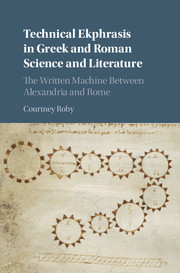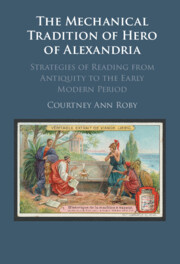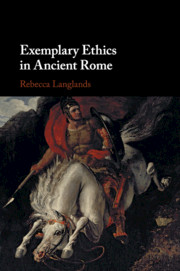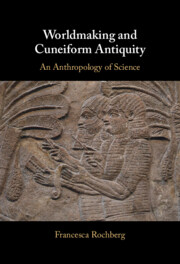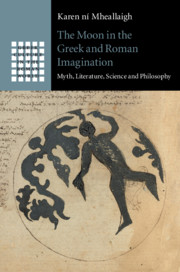Technical Ekphrasis in Greek and Roman Science and Literature
Ekphrasis is familiar as a rhetorical tool for inducing enargeia, the vivid sense that a reader or listener is actually in the presence of the objects described. This book focuses on the ekphrastic techniques used in ancient Greek and Roman literature to describe technological artifacts. Since the literary discourse on technology extended beyond technical texts, this book explores 'technical ekphrasis' in a wide range of genres, including history, poetry, and philosophy as well as mechanical, scientific, and mathematical works. Technical authors like Philo of Byzantium, Vitruvius, Hero of Alexandria, and Claudius Ptolemy are put into dialogue with close contemporaries in other genres, like Diodorus Siculus, Cicero, Ovid, and Aelius Theon. The treatment of 'technical ekphrasis' here covers the techniques of description, the interaction of verbal and visual elements, the role of instructions, and the balance between describing the artifact's material qualities and the other bodies of knowledge it evokes.
- Links ancient technical literature to contemporary literature in more familiar genres
- Addresses the visual elements of ancient scientific texts
- Addresses broader approaches to ancient technical literature derived from the history and philosophy of science
Reviews & endorsements
'Even those who are already familiar with the antique specialist literature can benefit from this careful study and take away new insights.' Thorsten Fögen, GNOMON
Product details
May 2016Hardback
9781107077300
334 pages
235 × 160 × 22 mm
0.63kg
7 b/w illus.
Available
Table of Contents
- Introduction: the written machine
- 1. Genres: texts and artifacts
- 2. Cultural contexts
- 3. The ekphrastic complex
- 4. Diagram and artifact
- 5. Description and instruction
- 6. Knowledge and artifact
- 7. Conclusion: the limits of description.

